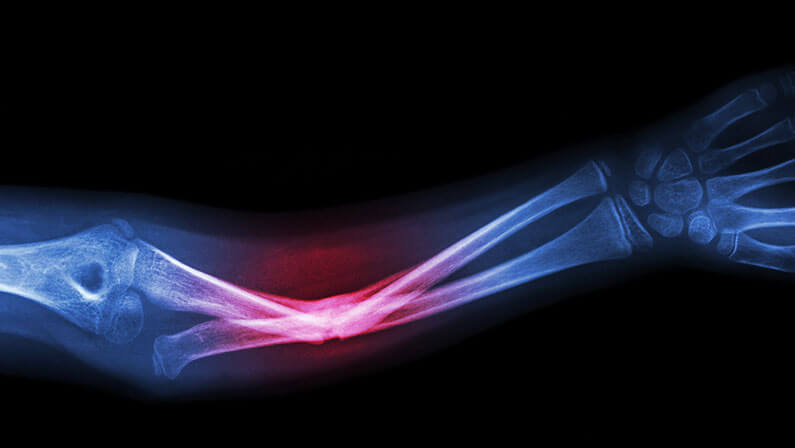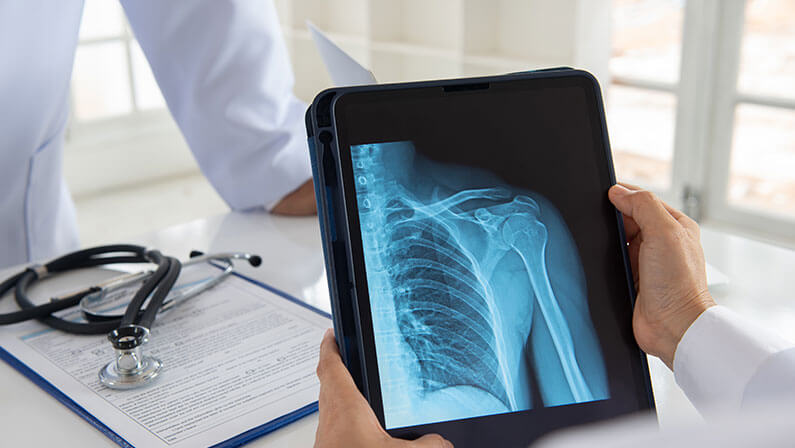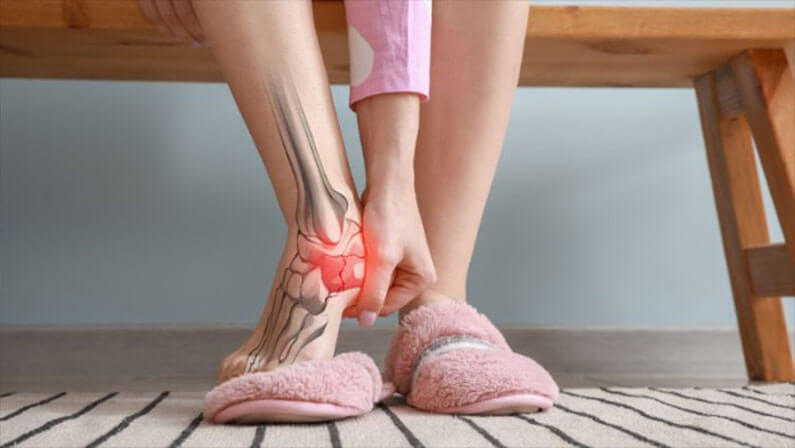A broken bone or fracture can happen to anyone at any time. Whether it’s a result of a sports injury, a fall, or an accident, the immediate pain and discomfort clearly indicate that something is amiss.
While some fractures may seem minor, the importance of seeking timely medical attention cannot be overstated.
Neglecting a broken bone can lead to a cascade of complications that may prolong your recovery and impact your long-term health and mobility.
In this article, we’ll explore the critical reasons why treating a broken bone promptly is essential, and what can happen if you don’t.
Importance of seeking medical attention for broken bones
Seeking prompt medical attention for a broken bone is crucial because it ensures proper alignment, stabilization, and healing. Without treatment, even seemingly minor fractures can lead to complications like infection, deformity, or impaired function, potentially affecting your long-term quality of life.

Types of Broken Bones
When it comes to bad broken bones, they aren’t all the same. They can manifest in various forms which is recorded in a Podiatry EMR for each patient, each with its own characteristics and potential risks.
Simple fracture
A simple fracture, also known as a closed fracture, occurs when the bone breaks but doesn’t puncture the skin. It usually requires immobilization with a cast or splint to heal correctly, but the risk of complications is relatively low compared to more severe fractures.
Compound fracture
In contrast, a compound fracture, also called an open fracture, involves a broken bone that pierces through the skin. This type of fracture is particularly concerning because it exposes the bone to the external environment, increasing the risk of infection significantly. Immediate medical attention is essential to minimize these risks.
Stress fracture
Stress fractures typically develop over time due to repetitive impact or strain on a bone. They often occur in weight-bearing bones like the shin or foot. While they may not appear as severe as other fractures, they can lead to chronic pain and long-term issues if left untreated.
Greenstick fractures
Greenstick fractures are more common in children, as their bones are more flexible than those of adults. In this type of fracture, the bone partially breaks, resembling a green twig that has been bent. While they may seem less severe, they still require medical evaluation and proper care to ensure they heal correctly.
Comminuted fractures
Comminuted fractures are complex and involve the bone breaking into multiple pieces. These fractures can be challenging to treat and often require surgical intervention to realign and stabilize the bone fragments. Without proper medical attention, comminuted fractures can lead to deformity and functional impairment.
Risks and Consequences of Not Treating a Broken Bone
Ignoring a broken bone can have severe repercussions that extend beyond the initial discomfort. In this section, we’ll explore what happens if a broken bone goes untreated.

Risk of infection
Failure to address a broken bone promptly increases the risk of infection, especially in compound fractures where the bone pierces the skin. Bacteria can easily enter the open wound, potentially leading to a bone infection known as osteomyelitis. Left untreated, osteomyelitis can spread, causing systemic health issues and necessitating more aggressive treatments, such as surgery and long-term antibiotics.
Non-union or malunion
Without appropriate medical intervention, some fractures may fail to heal correctly. Non-union occurs when the bone doesn’t mend, while malunion is the improper alignment of healing bone. Both conditions can result in persistent pain, limited mobility, and the need for additional surgeries to correct the problem, which may not always restore full function.
Blood vessel or nerve damage
Untreated broken bones can damage nearby blood vessels and nerves, especially in complex fractures or joint areas. Nerve injuries may lead to long-term numbness, weakness, or chronic pain, while damage to blood vessels can restrict blood flow to the injured area, delaying healing and increasing the risk of tissue death.
Compartment syndrome
In some cases, untreated fractures can lead to compartment syndrome, a painful condition where pressure builds within the muscles and soft tissues surrounding the fracture. This pressure can impede blood flow, causing muscle and nerve damage. Compartment syndrome is a medical emergency that requires immediate intervention to prevent irreversible tissue damage and loss of limb function.
Chronic pain and arthritis
Neglected fractures can result in chronic pain, even after healing, due to irregular bone alignment or damage to joint surfaces. Moreover, untreated fractures can accelerate the onset of post-traumatic arthritis, which can be particularly debilitating and may require ongoing pain management or joint replacement surgery.
Deformity and loss of function
Leaving a broken bone untreated can lead to permanent deformities and a loss of function in the affected area. This can affect your ability to perform daily tasks, participate in physical activities, or even impact your overall quality of life. Timely treatment is essential to maximize the chances of a full recovery and minimize long-term consequences.
Prevention and Timely Treatment for Broken Bone
Preventing broken bones and ensuring timely treatment are key to avoiding the potential complications discussed earlier. Here are some crucial measures and actions to take when faced with a fracture:

- Stay Safe: The first step in preventing broken bones is to reduce your risk of accidents. Be cautious during physical activities, use protective gear when necessary (helmets, pads, etc.), and ensure your surroundings are hazard-free, especially for the elderly.
- Seek Immediate Medical Care: Don’t delay seeking medical attention if you suspect a broken bone. Getting an accurate diagnosis and timely treatment is essential. Remember that even seemingly minor fractures can lead to major problems if left untreated.
- Follow Medical Advice: Once diagnosed, adhere to your healthcare provider’s recommendations diligently. This includes wearing cast slings or using crutches as prescribed. Attend all follow-up appointments to monitor healing progress.
- Adopt a Bone-Healthy Lifestyle: Maintain strong bones by ensuring a diet rich in calcium and vitamin D, engaging in weight-bearing exercises, and avoiding habits like smoking and excessive alcohol consumption, which can weaken bones.
Get Immediate Treatment for Broken Bone
The consequences of not treating a broken bone are far-reaching and potentially life-altering. Seeking immediate medical attention and following through with treatment recommendations are paramount to a full recovery and preventing long-term complications.
For top-notch emergency care, Aether Health – Kingwood ER stands as a premier facility dedicated to providing swift and expert treatment for fractures and a wide range of medical emergencies. Don’t gamble with your health – make Aether Health – Kingwood ER your trusted partner in times of need.
If you or a loved one is facing a medical emergency, including a suspected broken bone, don’t hesitate. Visit Aether Health – Kingwood ER today for prompt, compassionate, and expert care. Your health and well-being are our top priorities.




